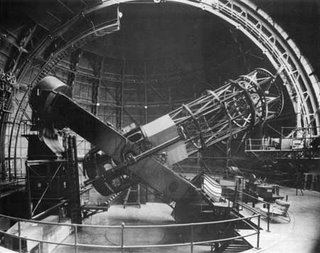kw: book reviews, nonfiction, science, astronomy
I am a science junkie. I haunt the 500 section of the local library, and the corresponding section of bookstores. While a few scientists write their own books, a larger number work with more literary collaborators. By far the largest number of books in the section are by popularizers, those who studied enough science at some point to write about it intelligently, and can communicate for scientists who can't write (frequently because they're too busy!). But there is nothing like the writing of an involved scientist who can also write very well, and is willing to take/make the time to write for the public.
J. B. Zirker is one of these gems. As the former director of the National Solar Observatory, with a forty-year career as a solar researcher, he has written three books about the sun and solar research. In An Acre of Glass: a History and Forecast of the Telescope he writes about telescopes in general, their development over the past three centuries, and his expectations of the near future in telescope development.
 For much of the 20
For much of the 20
Now, since the late 1970s, new technologies have allowed the production of telescopes as large as 400 inches (the 10 meter Keck telescopes). Larger instruments are being planned, right up to one called OWL, for OverWhelmingly Large telescope: 4,000 inches, or 100 meters (328 feet). Think of a mirror the size of ten suburban lots (2 acres), polished to an accuracy of 15-20 nanometers (less than a millionth of an inch), held in a mounting that won't let it sag by more than this amount, that can be pointed at any part of the sky.
Dr. Zirker brings us the background story behind many large instruments astromers have crafted, and those to come. He dwells on the incredible scientific discoveries each new instrument enables, and those that'll have to await the next big mirror.
Some may ask, "Why do you only mention mirrors? I thought telescopes had a big lens in front." Many do. The most common small telescope actually comes in a set of two: a pair of binoculars. Also, many folks have a stovepipe-size bargain telescope with a lens two or three inches across, and have had a look at the Moon or Saturn through it. But there is a problem with lenses. They don't focus all colors to the same point. Binoculars and other lens-type telescopes have two or three lenses bonded together at the front, each of a different kind of glass. They compensate for each other's deficiencies, so you can see a clear image without too much "secondary color." Also, the pieces of glass you need for a big lens, let's say four feet across, are very thick and heavy. The biggest practical refractor (lens-type) telescope is 44 inches in diameter and weighs a couple of tons.
Mirrors focus all colors to the same point. There are other issues that need to be addressed, but basically you just need to find a way to hold a few micrograms of aluminum or silver in place on a curved surface. A typical "first mirror" for an amateur telescope maker is six or eight inches across (15-20 cm), and weighs a few pounds. However, if you were to scale down the Palomar mirror from 200 inches to eight, it would be eggshell-thin, with an egg-crate hollow back, weighing about two pounds. This construction couples the great rigidity needed, with lighter weight (the 200-inch mirror weighs almost 20 tons; a 20-ton lens would be only 80-90 inches across). Larger telescopes use even more innovative techniques to reduce weight still further, but keep that thin metal surface in just the right configuration.
Even with modern detectors that can record nearly every photon, you need a lot of glass to record very distant objects with reasonable exposure times. The orbiting Hubble telescope, with its 2.4 meter mirror (just a little smaller than the Hooker telescope...an orbiting Greyhound bus), spent twelve days collecting the Ultra Deep Field image that shows galaxies and proto-galaxies that were among those earliest formed in the universe. If OWL gets built, and advanced optical correction gives it sufficient acuity, it could collect the same image in about ten minutes.
I can't do much astronomy, but I love reading about it, and I love this book.


